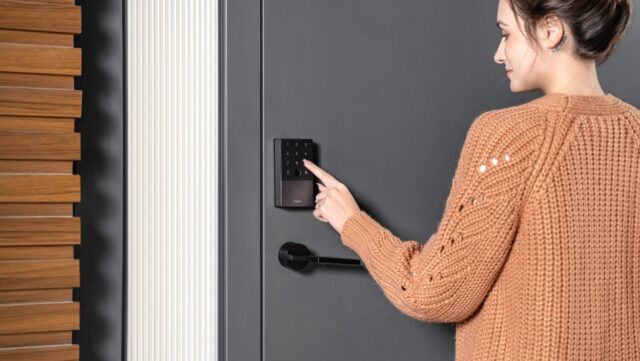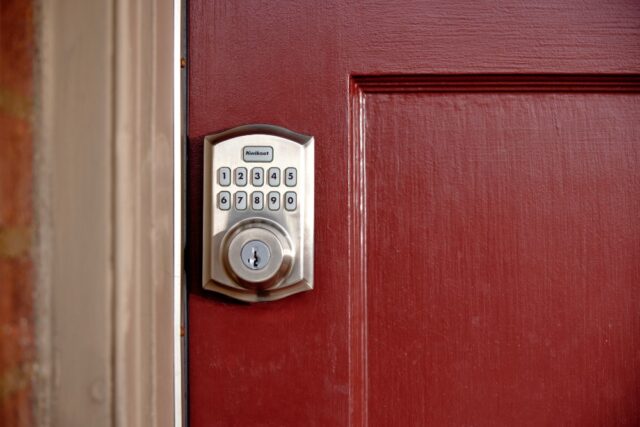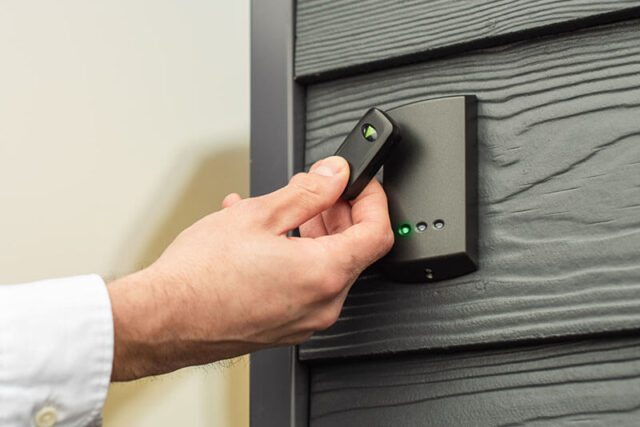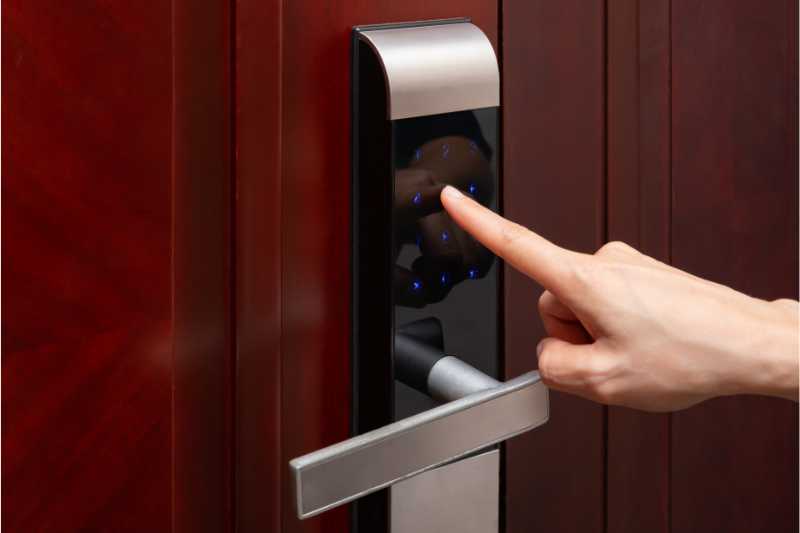
I remember the days when installing a new lock on the front door meant going to the neighborhood hardware store and choosing from two or three models. There were only a couple of styles back then, and all of them involved keys. How times have changed. These days, keyless entry is the big thing.
Keyless entry is essentially unlocking your door without using keys. It can be accomplished in any number of ways. Keyless entry locks can be installed as standalone home security devices or as part of a comprehensive home automation and security system. Here is the big question for every homeowner: is a keyless entry system the right way to go?
Fully Mechanical Locks

The locks of old were fully mechanical in every sense. Take an old fashioned deadbolt. Inside the lock is a mechanism that moves a bolt back and forth. When engaged, the bolt slides through the outside of the lock and into the door frame. When deactivated, the bolt slips back into the lock.
A key or handle activates and deactivates a deadbolt. Keyed access is for the exterior while handle access is for the interior. Some mechanical deadbolts use keys on both sides.
Handle locks follow the same basic principle. They are fully mechanical devices that rely on keys, buttons, and internal mechanisms to activate and deactivate. Mechanical lock technology is a tried-and-true technology that has performed well for centuries.
Mechanical and Electronic
Keyless locks are a bit different in that they are both mechanical and electronic at the same time. Take one of the keyless locks offered by Vivint Smart Home. It still relies on a mechanical deadbolt that secures the door by sliding into the door frame on activation. But the deadbolt can be activated either electronically or mechanically.
Mechanically, a key can still be used when necessary. But electronically, the lock can be activated and deactivated with a numerical touchpad, a biometric device, or even wirelessly with a cell phone. Let us take a closer look:
Numerical Touchpad – The numerical touchpad is the most common option. You program the lock with a 4-digit security code. The lock is activated or deactivated by entering the code in using the touchpad.
Biometric Device – More advanced keyless entry locks utilize biometric identification for access. One lock might have a fingerprint reader while another has a retina scanner. We even have keyless locks that can now grant access through facial recognition.
Wireless Access – Wireless access is an extremely popular option right now. Homeowners with wirelessly accessible locks can lock and unlock their homes with just a tap on the cell phone. It could not be easier.
It is important to note that, regardless of the electronic access technology, the lock itself still relies on a mechanical design to work. Locks still require some sort of mechanism that slides back and forth. Key mechanisms are almost always included for backup purposes.
Advantages of Keyless Entry

So, what are the advantages of keyless entry? There are lots of them. At the top of the list is not having to fumble with keys when you’re standing at the door. Anyone who has tried to unlock the door while wrestling a small child or a couple of bags of groceries knows how challenging it can be. With keyless entry, there is no more wrestling.
Here are a few more advantages:
Guest Access – Keyless entry allows homeowners to give guests temporary access to their homes without having to pass out spare keys. Keyless entry is more convenient and more secure.
Kid Access – Giving a child a key they could potentially lose makes a lot of parents nervous. Keyless entry mitigates that problem too. Johnny and Susie will not lose keys they don’t have.
Remote Access – Although there are exceptions to the rule, most keyless entry locks on the market today are also smart locks. That means they can be accessed remotely. Think of the possibilities here.
Not having to worry about keys can be a game changer. It certainly makes access to one’s home more convenient. And though it does not really matter, unlocking the front door without having to use keys is kind of fun.
Disadvantages of Keyless Entry

Not everything about keyless entry locks his sunshine and roses. There are some distinct disadvantages to installing this kind of lock. Near the top of the list is relying on battery power. Homeowners need to be diligent about checking and replacing batteries. That is not very convenient.
Unfortunately, the one day that you forget your keys is the same day you will return home only to find that the batteries in your lock are dead. You’ll have to hope that another family member has keys. Otherwise, you will be left to break into your own home.
Other disadvantages include:
Complex Installation – Although some keyless entry locks go in just as easily as their mechanical counterparts, most do not. Installation is more complex because you are dealing with both a mechanical lock and a wireless device.
Connectivity Issues – In addition to relying on battery power, keyless entry locks require network connectivity. The only exception is keypad entry. Any other means, like biometrics and cell phone entry, require a connection.
Purchase Price – Keyless entry locks are more expensive than their mechanical counterparts. Part of that is due to the electronics, but part of it is also due to the novelty factor. While keyless entry remains a novelty, prices will stay high.
You have options for controlling access to your home. Mechanical locks have served their purpose well for as long as any of us can remember. You can never go wrong with a heavy-duty deadbolt and a solid door frame.
On the other hand, keyless entry locks represent a new way to secure a home. If you are into technology and you have had enough of playing with your keys, consider a keyless entry lock instead. Between the two choices, there are plenty of options to look at.









